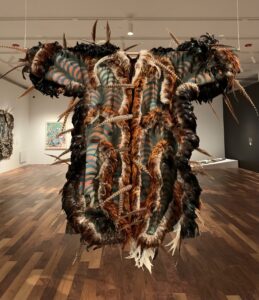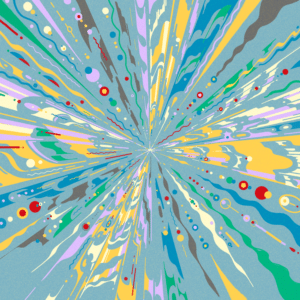Peter Williams (Yup’ik) is an Alaska Native artist and activist who uses his work in the medium of Native marine mammal craftwork to perpetuate Indigenous knowledge and practices for future generations.
As a Luce Indigenous Knowledge Fellow, Williams has worked to broaden the market for traditional arts, such as his handmade “fur paintings,” and advocated for the rights of Alaska Natives, Native Americans and Indigenous people to practice traditional lifestyles in the present day.
In an article for First Alaskans magazine, he shares his journey as a practitioner and culture bearer of traditional Alaska Native knowledge and contrasts the Indigenous perspective of coexistence and reciprocity with nature against the Western worldview of lands and wildlife as resources to be extracted or protected. Williams advocates for greater agency and self-determination for Native people and emphasizes how “non-Native people are still creating the definitions and regulations of who qualifies as Alaska Native and what qualifies as Native art” and imposing “a White lens of how Natives “should” or “should not” interact with nature.”
A solo exhibition of Williams’ work, “Inherent Right,” is currently on view at the All My Relations Arts gallery in Minneapolis, MN.
Alaska Native Culture embodies reciprocity between human, plant, animal and spiritual worlds. I assume responsibility for this by practicing an endangered art form disrupted by colonization — sewing the skins of marine mammals and fish. My process perpetuates an Indigenous protocol of developing a personal relationship with ‘the materials of place’: I source by hunting and fishing; I alter by tanning; I construct by the time consuming yet cathartic labor of hand sewing, each stitch a prayer. Before a hunt I smudge and pray, asking the animal for its life; after the hunt I honor the animal by giving it its last drink of water per Yup’ik custom. Catches are shared as nourishment for my community, then repurposed into a reflection of Native experience.
My work as an artist developed concurrently and often overlapped with my efforts to introduce Alaska Native hand-sewn seal and sea otter fur garments into high-end fashion, rooted in the economic need of Alaska’s Indigenous communities to ensure the continuity of this practice. We live in a capitalist, colonial world, and unfortunately I can’t take a seal carcass down to the city office to pay my utilities bill — I must do so in USD. At craft fairs I frequently see Elders selling beautifully constructed, hand-sewn sealskin animal figures for the price of a pizza. I’m ashamed that our Elders’ unique skill sets and knowledge are so undervalued, and am reminded of the fact that if our tradition of marine mammal artwork remains unprofitable within the Western capitalist framework, future generations of Alaska Natives will elect not to practice it. My 10-year pursuit of introducing seal and sea otter garments into high-end fashion is rooted in this need to ensure the continuity of this practice.







